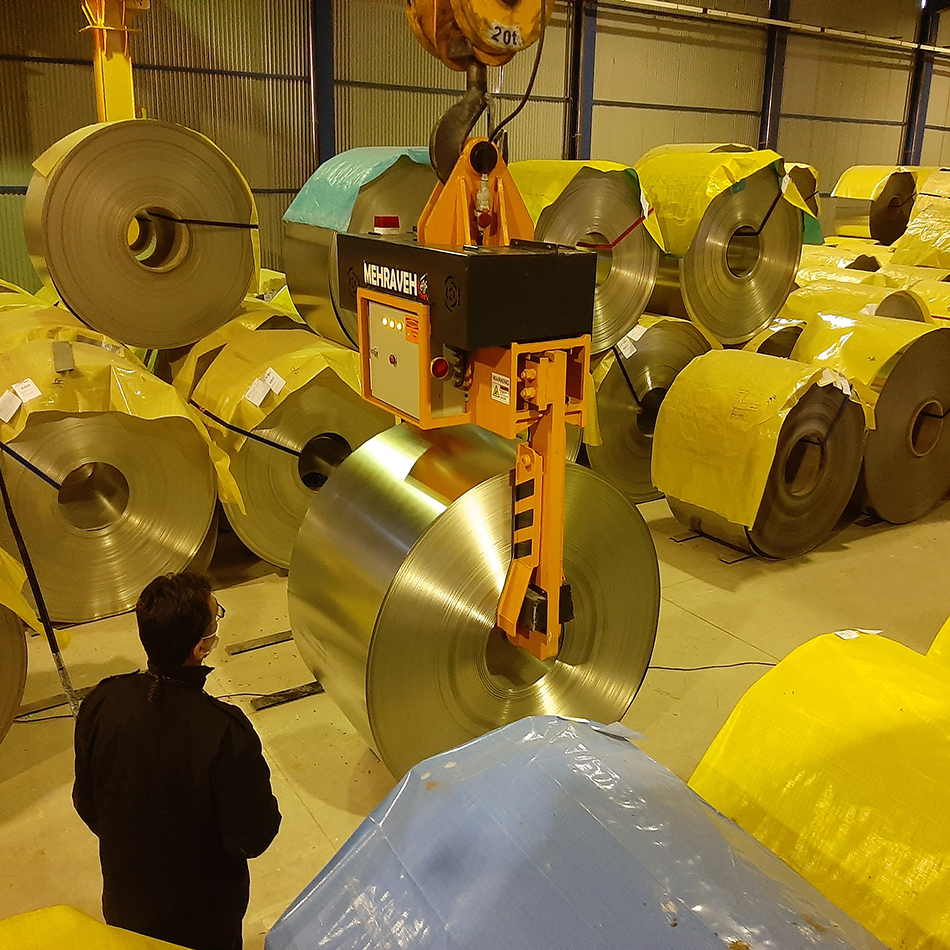Recommendations for Buying And Inspecting Below-the-Hook Lifting Devices

Arguably, your Below-the-Hook lifting Devices can be considered the “hands” of your operation. You might have great metal processing machines, but they cannot produce your product or value-added service unless the master coils, plates, structural pieces, sheet bundles and burned/cut parts can be efficiently and safely gripped, lifted and set into and moved out of your line.
This article will offer important things to consider before buying a lifting attachment, either separately or with a new overhead crane.
Below-the-Hook (BTH) Lifters in a Metal Service Center Commonly Include:
Coil lifters (C-hooks, manually adjustable coil lifters, motorized coil grabs, slit coil I.D. lifters)
Sheet/plate lifters (manual or motorized)
Specialty devices (for beam/plate flipping or cleaning out slitting line looping pits)
Any of these devices can significantly impact the design and functionality of the overhead crane it attaches to.
Here are some recommendations:
CONSULT FIRST with a manufacturer of BTH lifters.
This discussion will define your lifting process and duty cycle and helps create the specification for the lifting system that best meets your needs.
As a minimum, the net weight of the lifter needs to be added to your heaviest load to arrive at the crane’s required lifting capacity. The lifter’s function and physical envelope (length, width, height) are important to know when establishing the crane hook end-approaches, maximum lifting height and total lift needed.
An electrically-powered motorized lifter with numerous motion interlock sensors adds another layer of complexity to the crane’s electrical system design…from the type of motion buttons on the crane operator’s station to the physical location of motor control enclosures and means of getting electrical power to the lifter.
Once the BTH lifter specification is defined, these critical pieces of information can be passed on to the crane manufacturer or service provider:
Lifter net weight
Lifter envelope dimensions
Lifter power supply
Type/size and location of lifter motor controls and operator controls
Number/size of electrical wires needed by the lifter.
Consider buying a PACKAGE.
You might think that you will save money by purchasing a BTH lifter separately from a new crane. Think again. As mentioned above in 1.c, a complex electrically powered lifter is really an extension of the crane. The BTH lifter manufacturer and the crane OEM need to collaborate during the early design stage to ensure a seamless lifting system. This will avoid finger pointing during field installation and start-up. Operation, maintenance and spare parts information will be combined in one set of documents. Operator training and early operational snags can be handled through a single point-of-contact.
If you are sold on the BTH lifter brand that you worked with to develop the lifter specs, you can specify that brand to the crane OEM(s). Then your selection is narrowed to choosing a crane OEM and not having to worry about what BTH lifter they are providing.
If you are adding a new BTH lifter to an existing crane, the crane may need modifications so that the lifter can operate with it. Consider working with the crane OEM or a reputable crane service provider to lead the way. This is especially important when applying an electrically-powered lifter.
INSPECT the BTH Lifter WITH THE CRANE.
As providers of a small segment of industrial equipment, most BTH lifter manufacturers do not have full-time field service technicians and inspectors. However, many reputable crane service organizations can perform basic inspections of BTH lifters.
Safety Standards for BTH lifting devices are developed and published by the ASME B30 committee, as are similar Standards for overhead and gantry cranes. Frequent and periodic inspections described in the Standards for BTH lifters and cranes can and should be performed on the same schedules.
Therefore, it is recommended that inspections of BTH lifters be included in the scope of the crane inspection if not already done so.
Unlike the crane, if a BTH lifter needs an extremely detailed inspection or a major overhaul, it can usually be returned to the OEM or other reputable lifter manufacturer to perform the work rather than attempt a complex field-repair.

